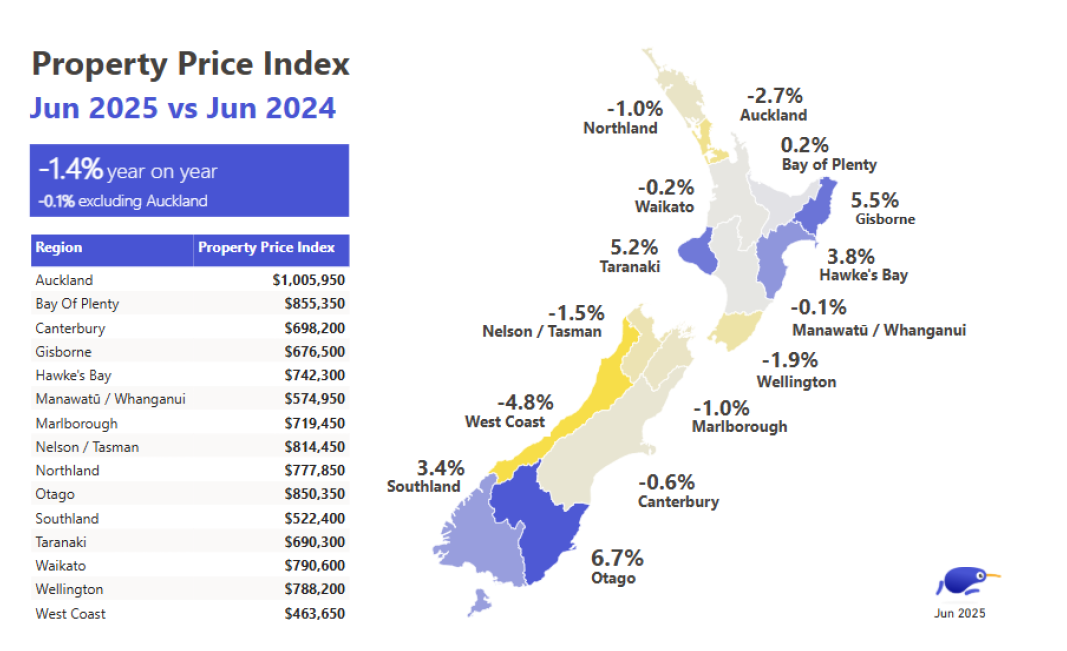Otago rises as national prices continue falling

New Zealand’s average asking price fell to its lowest level since September 2024, according to Trade Me’s latest Property Pulse Report.
In June, the national average asking price dropped to $829,650, falling more than $15,000 (-1.8%) from May and down 1.4% year-on-year.
Auckland records biggest drop
Trade Me Property customer director Gavin Lloyd (pictured) said Auckland has seen the sharpest price falls both monthly and annually.
“Tāmaki Makaurau has seen the largest decline in the average asking price, from both a month-on-month (-2.4%) and year-on-year perspective (-2.7%),” Lloyd said.
“If we look at the price in June and compare it to the same time last year it shows a fall of close to $28,000. That said, the average asking price of property in Aotearoa’s largest city continues to hold above the million-dollar mark (at $1,005,950), $150,000 more than the Bay of Plenty, which is the next most expensive region.”
Otago and Southland buck national trend
While prices declined nationally, southern regions saw strong gains.
Otago’s average asking price increased 6.7% year-on-year, a rise of nearly $54,000, driven by districts including Waitaki (+2.8%), Dunedin (+2.2%), Queenstown Lakes (+1.8%) and Wanaka (+1.3%).
“Otago is a huge and diverse region, it’s laid-back, incredibly scenic and is particularly appealing for lovers of the great outdoors, a wonderful place to call home,” Lloyd said.
“With recent Census figures showing increasing Kiwi to be moving south it will be interesting to see if the growth in house prices in Otago continues its steady upward trajectory.”
Southland, where Census data shows growing internal migration, also recorded gains, with the average asking price up 3.4% year-on-year (about $17,000) to just over $522,000.
“While it’s on the up it still remains one of the most affordable regions across the motu,” Lloyd said.
This follows QV’s June-quarter data showing that while national values fell 0.3%, gains were strongest in affordable regional areas like Wairoa, Gore, and Buller – further highlighting divergence between major cities and smaller centres.
Taranaki and Hawke’s Bay also climb
Further north, Taranaki saw a 5.2% annual price increase, or nearly $35,000, while Hawke’s Bay rose 3.8%, adding over $27,000 in value.
Listings and demand decline from May
The number of properties listed on Trade Me Property fell 9% from May to June but remained 4% higher year-on-year. Demand dipped 12% month-on-month, while holding flat compared to June 2024.
“Seeing supply dip at this stage of the year isn’t unexpected, but there remains plenty of choice in the market for those house hunting with several thousand more properties listed on site than the same month last year,” Lloyd said.
The median time listings spent onsite also increased – up from 70 days in May to 78 days in June.




